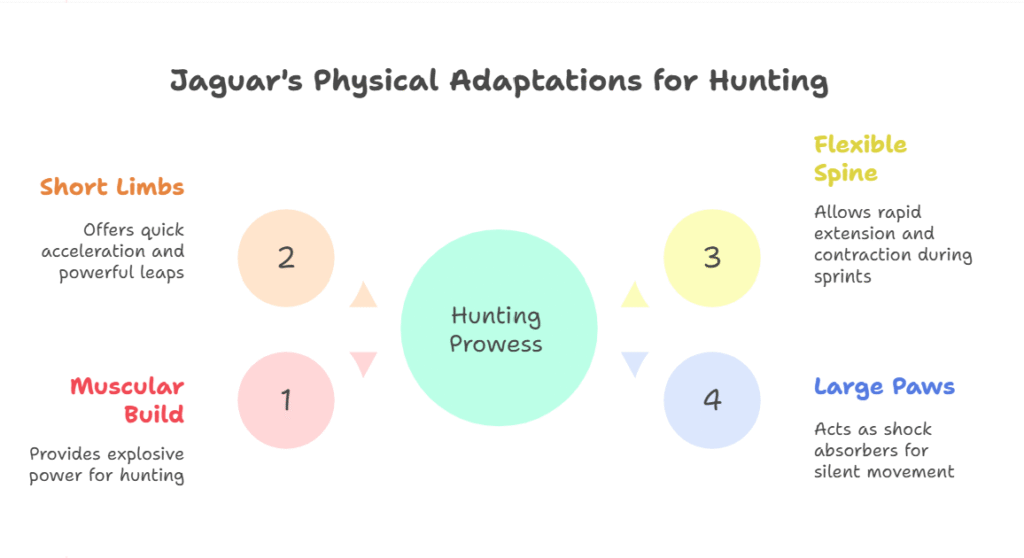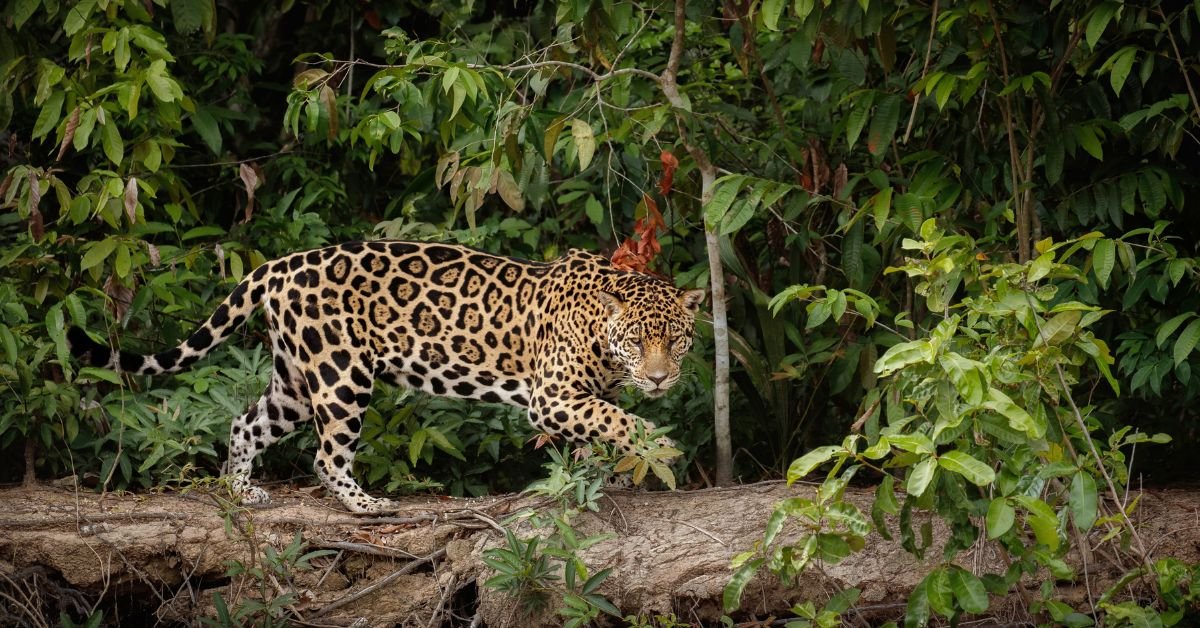Jaguar Speed is impressive, but it’s not the fastest in the animal kingdom. Jaguars can reach speeds of up to 50 miles per hour (80 km/h) in short bursts. However, they rarely maintain this speed for long distances. Instead, jaguars are built for explosive acceleration and power, not marathon sprints.
Their speed is just one part of their hunting arsenal. Jaguars are ambush predators, relying on stealth, strength, and a lightning-fast pounce to catch their prey. In the dense forests and swamps of Central and South America, this strategy is far more effective than a long chase.
How Fast Is the Fastest Cat?
When people talk about the fastest cat, the cheetah always comes up first—and for good reason. The cheetah holds the world record for land speed among mammals, clocking in at an astonishing 60–70 miles per hour (97–113 km/h). But there’s a catch: cheetahs can only maintain this speed for about 20–30 seconds before overheating.
Leopards, on the other hand, are slightly slower than jaguars, reaching top speeds of around 36 miles per hour (58 km/h). But like jaguars, leopards are ambush hunters, relying on stealth and surprise rather than pure speed.
So, where does the jaguar fit in? While it’s not the fastest cat, its combination of speed, power, and stealth makes it one of the most formidable predators in the wild.
Cheetah vs Leopard vs Jaguar: The Ultimate Speed Showdown
Let’s break down the cheetah vs leopard vs jaguar debate with a quick comparison:
| Cat | Top Speed (mph) | Top Speed (km/h) | Hunting Style | Habitat |
|---|---|---|---|---|
| Cheetah | 60–70 | 97–113 | Sprint, chase | Open savannah, grassland |
| Jaguar | 50 | 80 | Ambush, pounce | Forest, swamp, jungle |
| Leopard | 36 | 58 | Ambush, stalk | Forest, savannah, mountain |
Cheetah: The undisputed speed king, but built for short, open sprints.
Jaguar: The powerhouse, combining speed with brute strength and stealth.
Leopard: The versatile climber, using agility and cunning to hunt in diverse environments.
Cheetah vs Jaguar: Who Wins the Race?
If you put a cheetah and a jaguar side by side in a straight-line race, the cheetah would win every time. But in the real world, hunting isn’t just about speed. It’s about strategy, environment, and adaptability.
Cheetah vs jaguar is a classic debate among wildlife fans. Cheetahs are built for speed, with lightweight bodies and long legs. Jaguars, on the other hand, are stocky and muscular, with the strongest bite force of any big cat. They can crush turtle shells and even pierce the skulls of their prey.
In the dense forests where jaguars live, speed is less important than stealth and power. That’s why jaguars have evolved to be the ultimate ambush predators, using their speed in short, explosive bursts to surprise their prey.
Jaguar Predators and Survival Tactics
You might be surprised to learn that adult jaguars have very few natural enemies. In the wild, wwwjaguar predators are mostly limited to humans, who threaten jaguars through habitat destruction and poaching.
Young jaguars, however, can fall prey to anacondas, caimans, and even other big cats. That’s why jaguar mothers are fiercely protective, keeping their cubs hidden until they’re strong enough to fend for themselves.
Jaguars use their speed and agility not just for hunting, but also for avoiding danger. Their ability to move quickly and silently through dense undergrowth is a key survival skill.
Real-Life Encounters: Jaguar Speed in Action
Wildlife researchers and photographers often share jaw-dropping stories about jaguar speed. One field biologist recalled:
“I watched a jaguar leap from the riverbank and snatch a capybara before it even knew what hit it. The speed and power were unbelievable—one second, the capybara was grazing, and the next, it was gone.”
These real-life encounters highlight just how effective jaguar speed is in the wild. It’s not about running the fastest marathon—it’s about making every move count.
The Science Behind Jaguar Speed
What makes jaguars so fast and powerful? It all comes down to their anatomy:
- Muscular Build: Jaguars have stocky, muscular bodies that provide explosive power.
- Short Limbs: Their relatively short legs give them a low center of gravity, perfect for quick acceleration and powerful leaps.
- Flexible Spine: Like other big cats, jaguars have a flexible spine that allows for rapid extension and contraction during a sprint.
- Large Paws: Their paws act like shock absorbers, helping them move silently and grip the ground during a chase.
Jaguars are also excellent swimmers, often hunting in and around water—something most other big cats avoid.

Risks, Pros, and Cons of Jaguar Speed
Pros
- Ambush Advantage: Quick bursts of speed allow jaguars to surprise prey.
- Versatility: Speed, combined with strength, makes them adaptable hunters.
- Survival: Speed helps jaguars escape threats and protect their territory.
Cons
- Short Distances Only: Jaguars can’t maintain top speed for long.
- Energy Cost: High-speed chases use a lot of energy, so jaguars prefer to ambush rather than chase.
- Habitat Limitation: Their speed is best suited to dense forests, not open plains.
Risks
- Human Threats: Habitat loss and poaching are the biggest dangers to jaguars today.
- Competition: Jaguars sometimes compete with other predators for food, but their speed and power give them an edge.
FAQ: People Also Ask
Q. How fast can a jaguar run?
A. Jaguars can reach speeds of up to 50 miles per hour (80 km/h) in short bursts, making them one of the fastest cats in the Americas.
Q. Is the jaguar the fastest cat in the world?
A. No, the cheetah is the fastest cat, capable of reaching 60–70 miles per hour (97–113 km/h). Jaguars are fast, but they rely more on power and stealth.
Q. How does a jaguar’s speed compare to a leopard’s?
A. Jaguars are faster than leopards, which top out at around 36 miles per hour (58 km/h). However, both cats use ambush tactics rather than long chases.
Q. What are the main predators of jaguars?
A. Adult jaguars have few natural predators, but young jaguars can fall prey to anacondas, caimans, and other large carnivores. Humans remain the biggest threat.
Final Thoughts: Why Jaguar Speed Matters
Understanding jaguar speed isn’t just about numbers—it’s about appreciating how this incredible animal has adapted to its environment. Jaguars may not be the fastest cat, but their blend of speed, strength, and stealth makes them one of nature’s most effective predators.
CLICK HERE FOR MORE BLOG POSTS
There’s a certain weight in the words John Authers writes—not just because of what he knows, but how he shares it. His voice doesn’t just echo facts; it builds meaning. In a world overwhelmed by rushed opinions and robotic summaries, John’s writing feels… different. It feels lived-in, thoughtful, and deeply human.
Readers don’t turn to John for headlines—they come for context. They come for that rare blend of clarity, insight, and emotional depth that turns financial journalism into something closer to storytelling. His reflections on markets, geopolitics, or human behavior aren’t just readable—they’re relatable.
What sets John apart isn’t just his experience (though he has plenty of it). It’s his ability to pause, reflect, and explain the why behind the what. He writes like someone who’s been in the room where it happens—but never forgets the reader who hasn’t.
In 2025, when AI churns out articles in milliseconds, John Authers still writes like a human—and that, more than anything, is what makes his work worth reading.











